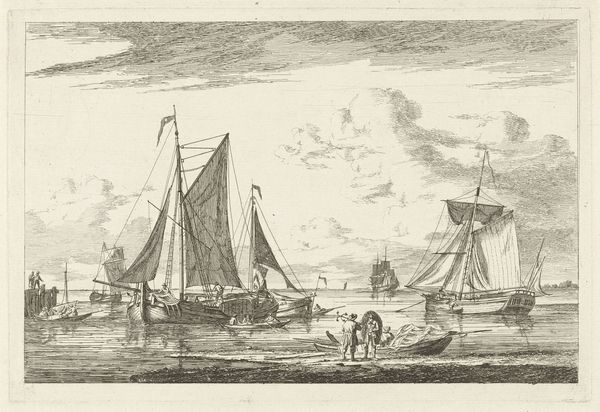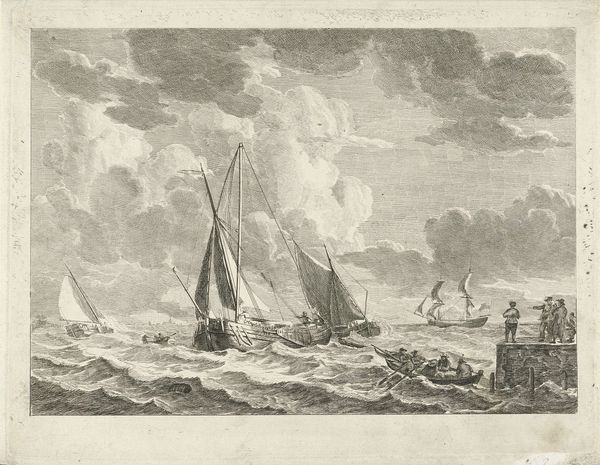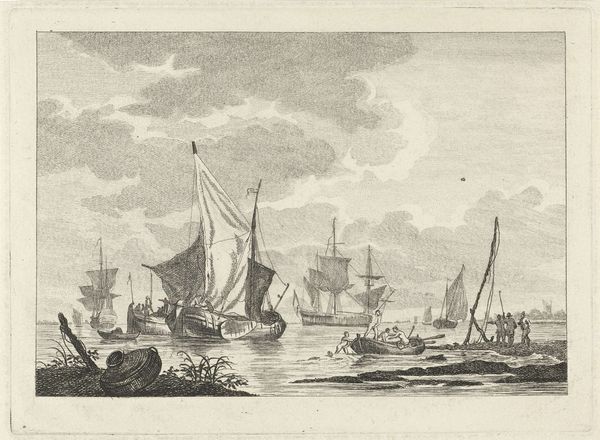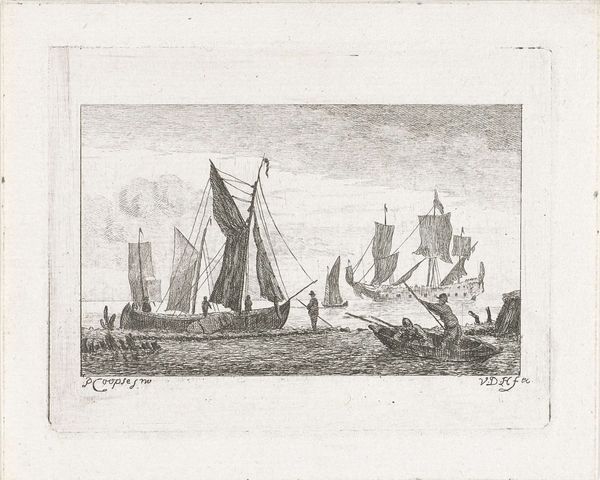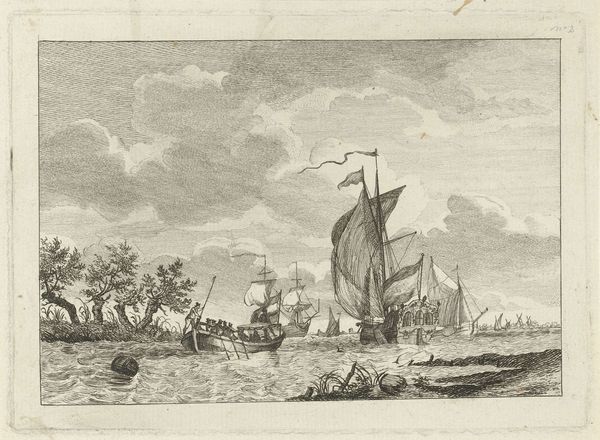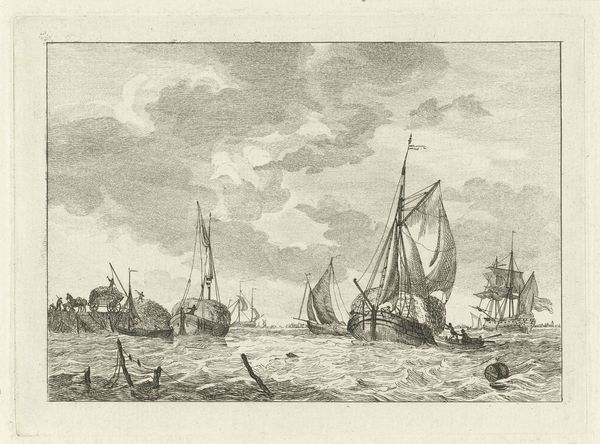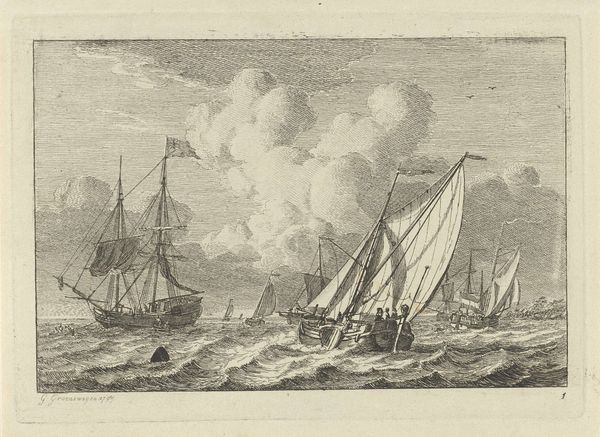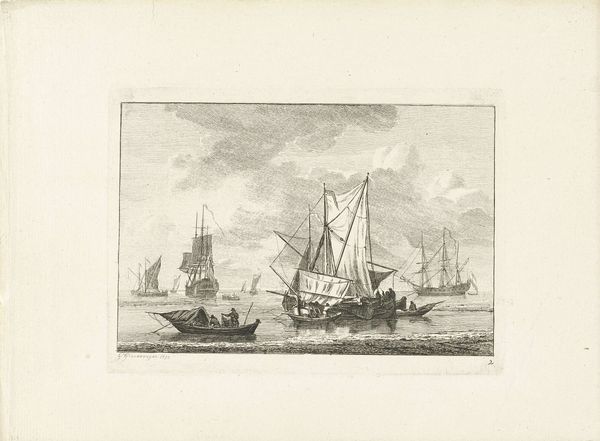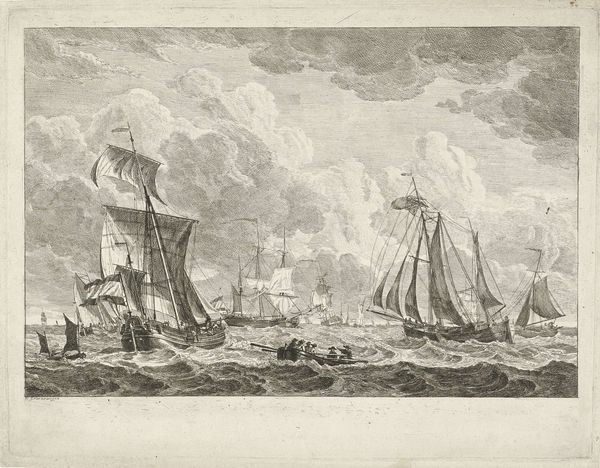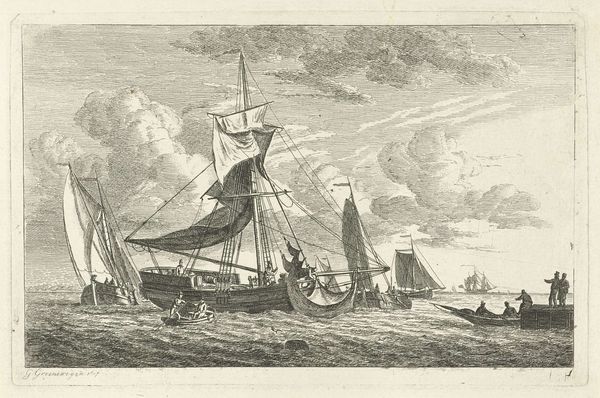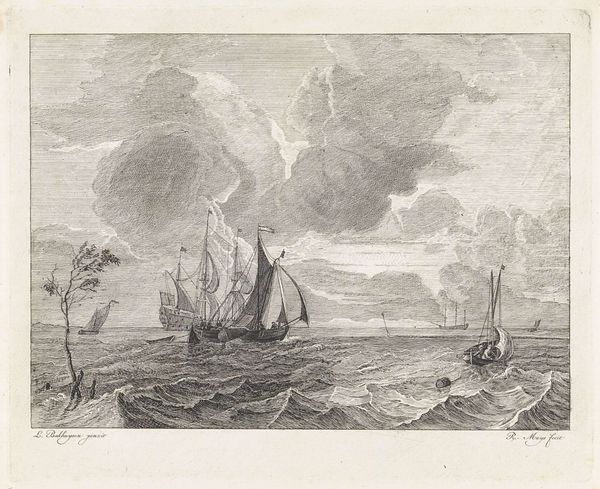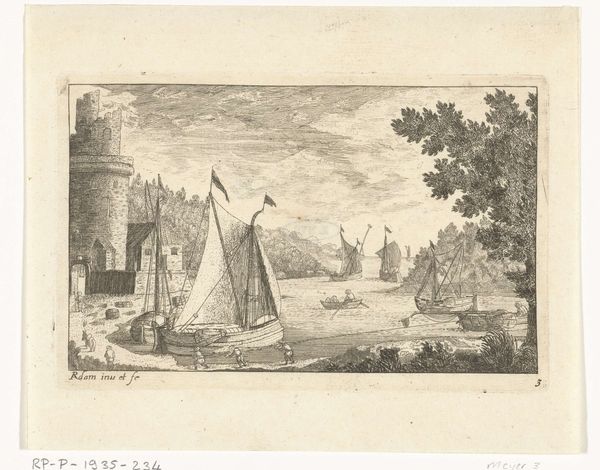
#
aged paper
#
photo restoration
#
old engraving style
#
traditional media
#
archive photography
#
personal sketchbook
#
historical photography
#
old-timey
#
sketchbook drawing
#
storyboard and sketchbook work
Dimensions: height 110 mm, width 82 mm
Copyright: Rijks Museum: Open Domain
Curator: Looking at "Schepen gaan voor anker," created sometime between 1776 and 1824 by Johannes Christiaan Bendorp, now housed in the Rijksmuseum...it has such an intriguing feel, doesn't it? Editor: Yes, a strong somber mood hits immediately. It’s all delicate lines and muted tones depicting ships at anchor; the cloudy sky looms and casts long shadows giving it a reflective if somewhat melancholic air. Curator: Melancholy, certainly, but perhaps also something more profound? The title itself, "Schepen gaan voor anker," translated to "Ships at Anchor," it suggests a pause, a moment of reflection on journeys past and future. Anchor as the sign of hope...or the burden of stasis. Editor: Right, I see what you mean. It's not just ships, it's a stage set of signs. There's the stark contrast between the foregrounded vessels—rendered with considerable detail—and the other sailing ship fading slightly in the distance, creating an ambiguous narrative. Is it returning, staying, or leaving? And note that the boats carry both a full and a folded sail, another stark division. Curator: Consider, too, the man standing in the shallows. Is he representative of common toil, the link between sea and land—suggesting human effort connecting different realms? Water could symbolize emotion; his work on the liminal boundary between could connect the ships to their significance for local culture and livelihoods. Editor: And there's a subtle dynamism created through the use of reflections and diffused light...almost vibrating...with a tension that the monochromatic palate resolves just enough to provide a feeling of balance. It's masterful work of line and tone in creating an atmosphere that conveys much more than just vessels in water. Curator: Precisely. In art history, seascapes were rarely ever *just* about the sea, it's a constant, churning source of identity and the exploration of new possibilities and futures...or as potent symbols for memory, connection, the life-and-death stakes in navigation. It holds so much power over how our worldview is formulated, our relation to the larger world! Editor: Yes, it offers layers of analysis to consider: technique, historical record, its place in Bendorp’s larger oeuvre and Dutch art of the time. It's fascinating to see the ways it engages these perspectives. Curator: Indeed, reflecting on this work helps us meditate on broader themes about place, memory, and purpose that go far beyond its mere formal qualities. Editor: A quiet picture, that holds so much power!
Comments
No comments
Be the first to comment and join the conversation on the ultimate creative platform.
